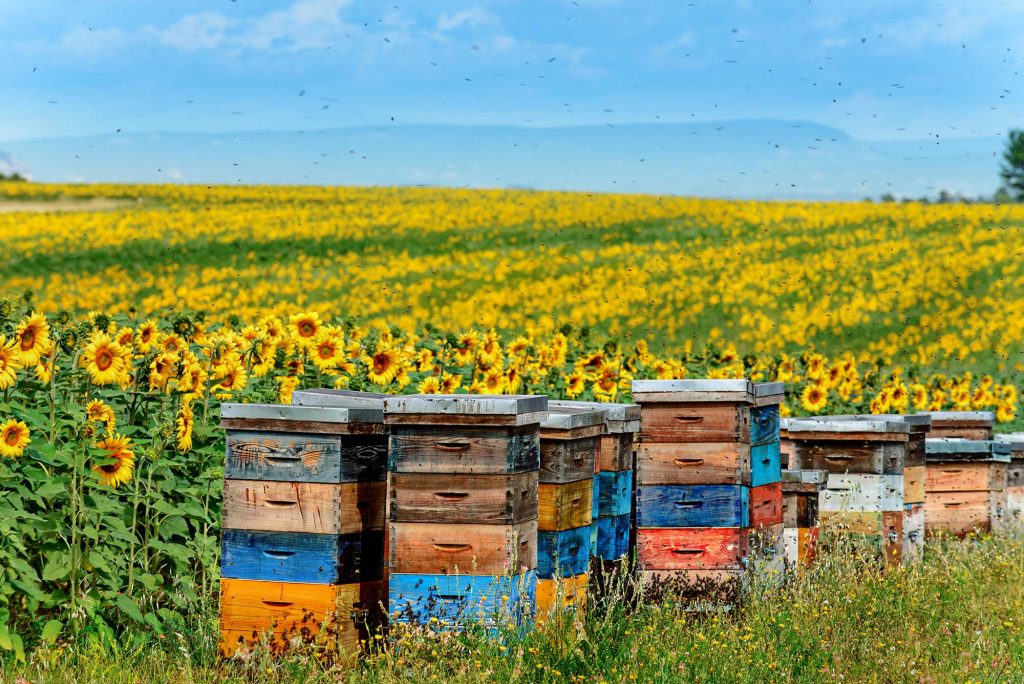What Spring Means to a Bee


Humans aren’t the only ones anticipating the warmth of spring; it is a highly critical time of year for honey-producing bees and pollinators, who count on the warm days to carry out their pollinating and nectar accumulation duties. The colony of bees’ honey supply from last year has been depleted during the cold winter months, so our friendly bees are ready to get back to work and collect the nectar and pollen they need. As the sun rises and the weather outside gets above 65 degrees, the bees are teeming with productivity and start an extensive season of nectar collecting, pollen spreading, and making the golden sweet goo that we all love so much.
How to Bees Prepare for Spring?
As the daylight extends into the early evening, the hive’s queen bee quickly boosts the speed of laying her eggs. The male bee workers or drones are allowed back into the hive since the female bees kick them out as winter falls. Drones breed with the queen bee during the spring and fall, enabling the queen bee to lay somewhere around 1,500 eggs a day! So, a queen bee can lay approximately one million eggs during her whole lifecycle. Thus the colony inhabitants increase exponentially during these warm months. As the population of honeybees increases, a hive can often contain over 80,000 bees. The Queen Bee is busy laying the eggs in the hive within individual cells. The eggs are so small that they can be mistaken for a small grain.
The queen is busy increasing the population of the hive by laying thousands of eggs. While she is doing her share, the drones know they’re responsible for pollinating and supplying nectar for the colony. These worker bees aren’t playing around, they visit up to 2000 flowers a day to get the nectar they need and pollinate the plants around them. Because of their size, they have to collect what they can, take it back to the hive then head out again. What an amazing work ethic!
What The Bee Professionals at D-Tek Do to Help The Bees
We have an apiary in North San Diego county that is buzzing with the bees that we rescue and remove live from homes and businesses throughout San Diego County. Spring is a very busy season for a beekeeper, as it’s one of the busiest times of productivity for the bees, and it’s a great time to see a beehive at its most elevated time of production. Hopefully, the hive has made it through the winter without using up the storehouse of honey they need to survive, otherwise, the bees can starve and don’t survive the winter months.
Spring is a very busy time for bee removal professionals. We receive hundreds of calls a week to do live bee removal and relocate the bees to our apiary. When removing the bees we make every effort to locate the queen bee if we are starting a new hive. Otherwise the bees we rescue will be added to current hives on the property. Our apiary is located near orchards and fields that provide ample pollen and nectar for our San Diego Bees.
What Can You Do? Plant Bee-Friendly Plants
Spring is on its way to greet us with warmer weather, picnics, and fun in the sun. Maybe take a few moments to consider how you can help pollinators and bees by planting pollinator-friendly plants in your backyard. Did you know that bees absolutely adore herbs? Seriously, they super enjoy the herbs many of us use, like rosemary, thyme and even mint. Some great pollinator-friendly choices for your garden are African Basil, Butterfly Bush, Daisies and Sunflowers. Using plants that are meant for your region and weather will yield the best results and provide a great supply of pollen and nectar to our yellow buzzing friends.
Come on Spring…We’re waiting for you!
